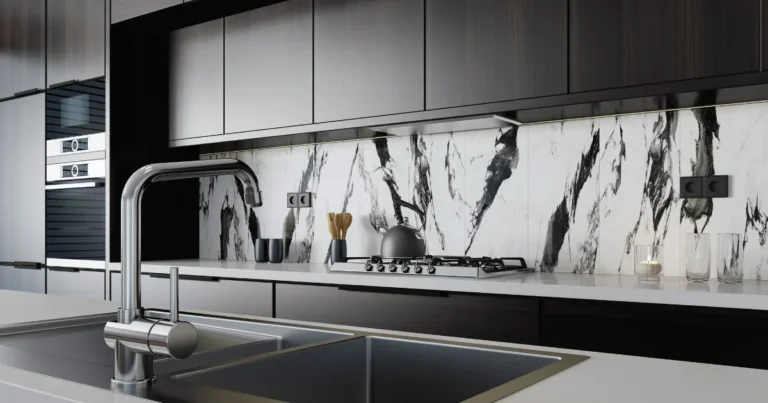How to Clean Kitchen Cabinets With a Gleaming Finish Every Time
Kitchen cabinets are the unsung heroes of any culinary space, but they often accumulate layers of grease, stains, and grime over time. Regular cleaning not only keeps your kitchen looking pristine but also maintains the longevity of your cabinets.
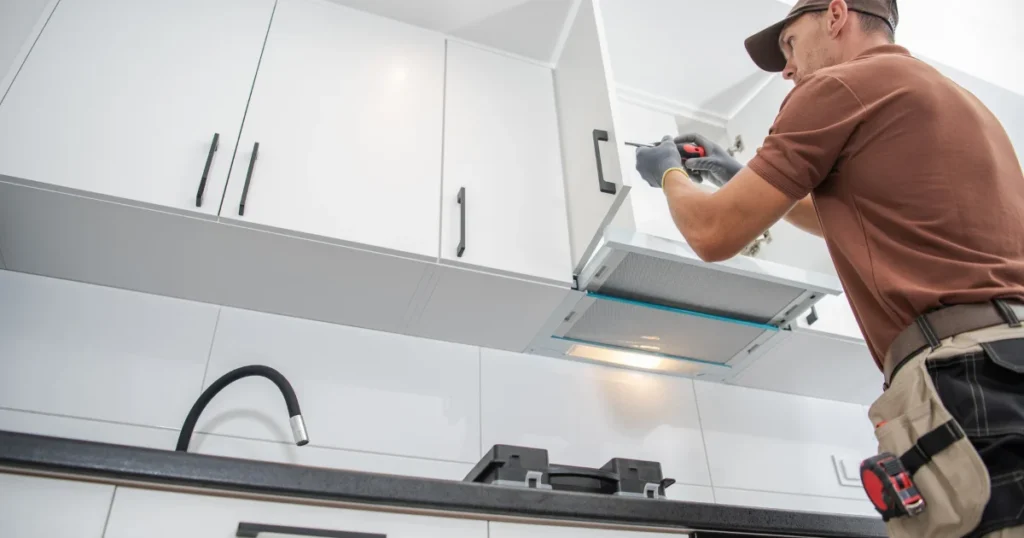
Understand Your Cabinets:
Before diving into the cleaning process, it’s crucial to identify the material of your cabinets. Different materials require specific cleaning methods to avoid damage.
- Wood Cabinets: Wood cabinets add warmth and elegance to kitchens but are prone to grease buildup. Use gentle cleaning solutions to preserve their finish.
- Painted Cabinets: Painted cabinets are common in modern kitchens. Avoid abrasive cleaners that could scratch or dull the paint.
- Laminate Cupboards: Laminate cabinets are durable and easy to clean. However, they can still accumulate grime, especially around handles and edges.
- Glass Cabinets: Glass cabinets showcase your dishware but can quickly accumulate fingerprints and dust.
When to Clean Cabinets
Maintaining cleanliness in your kitchen cabinets is not just about aesthetics; it also contributes to the overall hygiene and lifespan of your cabinetry. Knowing when to clean your cabinets can help you stay ahead of grime buildup and ensure a healthy environment in your kitchen.
- Regular Maintenance: Regular maintenance is key to preserving the condition of your kitchen cabinets. Aim to clean them at least once a month to prevent dirt, grease, and stains from accumulating.
- Seasonal Cleaning: Spring and fall are excellent times to deep clean your kitchen, including the cabinets.
- Before Special Occasions: Before hosting a special occasion or event in your home, it’s a good idea to give your kitchen cabinets some extra attention.
- After Cooking: Cleaning cabinets after cooking is essential, especially if you’ve been frying or cooking with oils. Grease tends to splatter and settle on cabinet surfaces, leading to a sticky buildup over time.
Clean Stained Kitchen Cabinets
Stains on kitchen cabinets can be unsightly and may detract from the overall appearance of your kitchen. Whether caused by spills, splatters, or everyday use, knowing how to effectively clean stained cabinets is essential to maintaining their beauty and prolonging their lifespan.
Grease Stains:
To tackle grease stains on kitchen cabinets, mix equal parts white vinegar and warm water. Apply the solution with a soft cloth or sponge, gently scrubbing in circular motions. For stubborn stains, make a paste with baking soda and water, apply, let sit, then wipe clean.
Water Stains:
Water stains can occur when moisture is left to sit on the cabinet surface for an extended period. To remove water stains, mix equal parts vinegar and olive oil. Apply the mixture to the stained area, let it sit for a few minutes, then wipe clean with a soft cloth. The vinegar helps to lift the stain, while the oil helps to restore the cabinet’s finish.
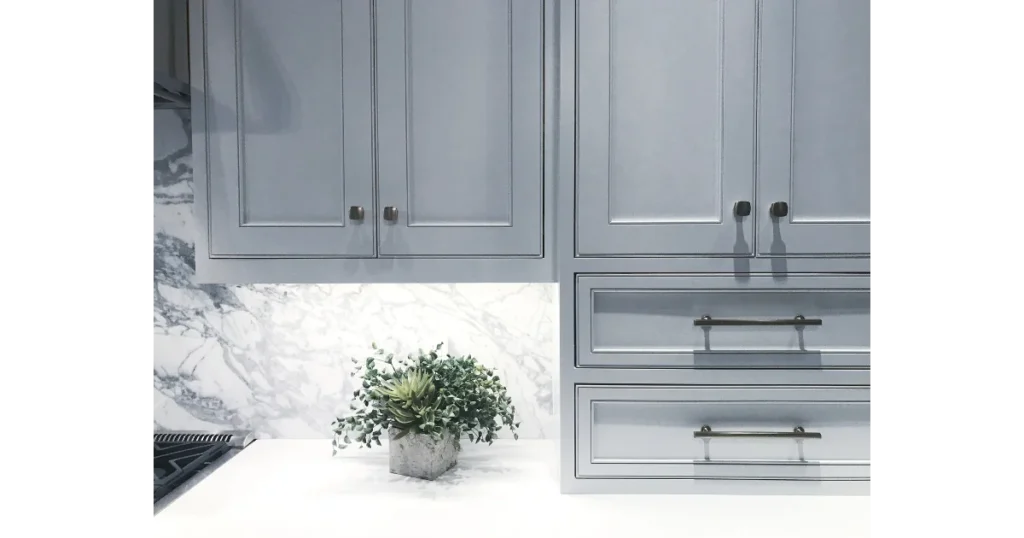
Food and Beverage Stains:
Food and beverage spills are inevitable in the kitchen and can leave behind stubborn stains if not promptly cleaned. To tackle food and beverage spills, mix dish soap with warm water. Gently scrub the stained area with a soft cloth or sponge, then rinse and dry. For tough stains, apply a paste of baking soda and water, let sit, then wipe clean.
Ink or Marker Stains:
Ink or marker stains can be particularly challenging to remove from cabinet surfaces. To tackle these stains, try using rubbing alcohol or nail polish remover applied to a soft cloth. Gently dab the stained area until the ink or marker begins to lift. Be sure to test the alcohol or remover on a small, inconspicuous area of the cabinet first to ensure it does not damage the finish.
Clean Painted Kitchen Cabinets
Painted kitchen cabinets can add a pop of color and style to any kitchen, but they also require proper maintenance to keep them looking their best. Follow these steps to clean painted cabinets without causing damage:
- Mixing a few drops of mild dish soap with warm water in a bucket or sink. Dip a soft cloth or sponge into the soapy water and gently scrub the painted cabinet surfaces, focusing on any areas with stains or buildup.
- For stubborn stains, create a paste with baking soda and water, apply it to the stain, and let it sit for a few minutes before wiping clean with a damp cloth.
- Rinse the cabinets with clean water and dry thoroughly to prevent streaks or water damage.
Tip
Avoid using abrasive cleaners or scrub brushes, as these can damage the paint finish.
Consider repainting your cabinets when the paint starts to wear off after a few years.
How to Clean Wood Kitchen Cabinets
Cleaning kitchen cabinets made of wood can be a challenge due to the variety of finishes and seals they may have. With different seals offering varying levels of forgiveness, it’s crucial to opt for gentle cleaners to ensure the safety of your cabinets.
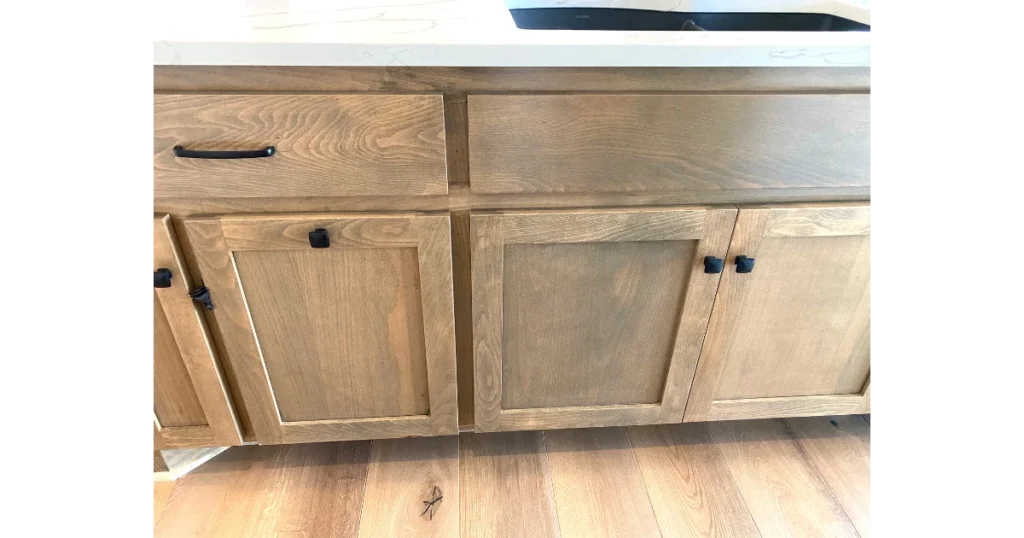
- Choose the Right Cleaner: Select a gentle oil soap or non-abrasive solution that is perfect for both cleaning and shining your cabinets, leaving them looking rejuvenated without causing damage.
- Mind the Moisture: When cleaning wood cabinets, always use damp cloths rather than soaking them in water. Too much liquid saturation can harm the wood, so ensure your cloths are just damp enough to get the job done without over-wetting the surface.
- Buff and Polish: After cleaning, use a dry microfiber cloth to buff and polish the wood. Remember to always wipe with the grain of the wood to avoid streaking or damage to the finish, maintaining the natural beauty of the wood.
- Extra Care for High-Moisture Areas: Keep a close eye on cabinets located in high-moisture parts of the kitchen, such as those directly above the stove. These areas are regularly exposed to steam and condensation, requiring extra care. Consider applying an additional coat of sealant to provide added protection against moisture damage.
With these tips and using gentle cleaning techniques, you can keep your wood kitchen cabinets looking pristine and extend their lifespan, enhancing the overall aesthetic of your kitchen for years to come.
Clean Laminate Cabinets
Cleaning laminate cabinets requires a gentle approach to ensure their longevity and appearance remain intact. Follow these steps to effectively clean laminate kitchen cabinets:
- Opt for mild detergent or dish soap mixed with warm water to clean laminate cabinets, avoiding harsh chemicals.
- Dampen a soft cloth or sponge with the cleaning solution to wipe down laminate cabinets, avoiding excessive water that may damage the surface.
- Maintain the laminate’s appearance by wiping in the direction of the grain, preventing streaking and preserving its look.
- After cleaning, ensure cabinets are thoroughly dried with a clean, dry cloth to prevent water spots or damage to the laminate finish.
Now you can keep your laminate kitchen cabinets looking clean and beautiful for years to come, enhancing the overall aesthetic of your kitchen space.
Cleaning Glass Cabinets
Cleaning glass cabinets requires a delicate touch to ensure they remain crystal clear and free of streaks. Here’s a step-by-step guide on how to effectively clean glass kitchen cabinets:
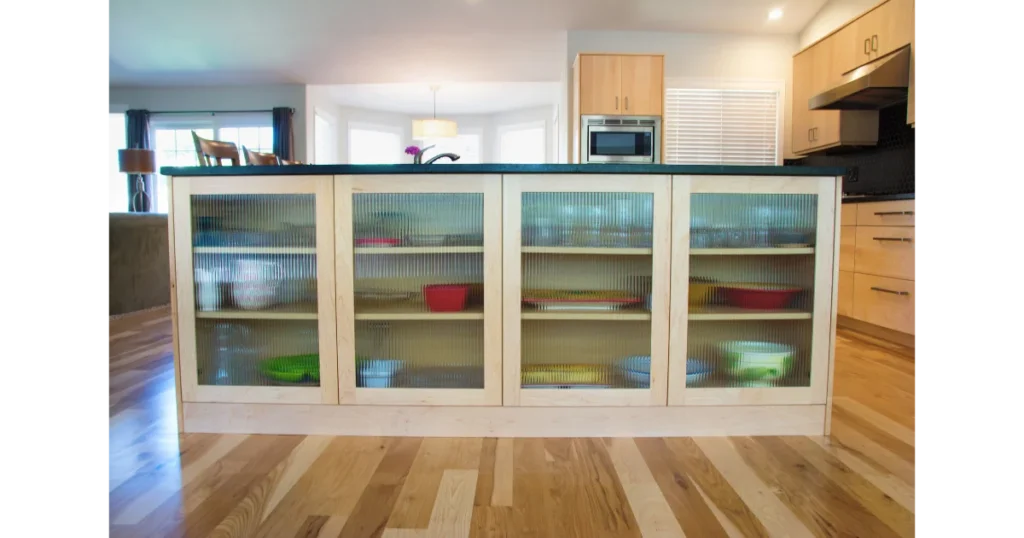
- Select a glass cleaner specifically formulated for use on glass surfaces. Avoid ammonia-based cleaners, as they can leave streaks or damage the glass over time. Alternatively, you can create your own cleaning solution by mixing equal parts white vinegar and water.
- Gather a soft microfiber cloth or lint-free towel to avoid leaving behind lint or fibers on the glass surface. If the cabinets have intricate detailing or crevices, use a soft-bristled brush to remove any dust or debris.
- Apply glass cleaner, ensuring complete coverage. Wipe in circular motions from top to bottom to prevent streaking and ensure thorough cleaning.
- Take care in cleaning corners and edges, where dirt accumulates. Gently scrub buildup with a soft brush or cloth, then wipe clean.
- Buff the glass with a dry microfiber cloth to remove moisture and streaks, using circular motions for a streak-free shine.
OUTLOOK
With these steps and maintenance tips, you can ensure your cabinets remain spotless and free of streaks, regardless of their material. Say goodbye to grease and grime, and hello to sparkling kitchen cabinets that enhance the beauty of your culinary space.


